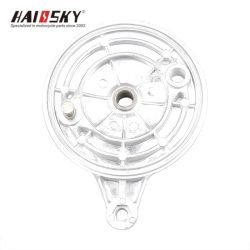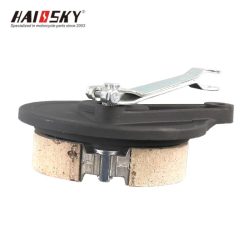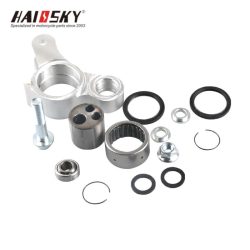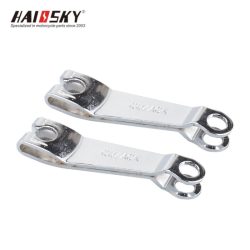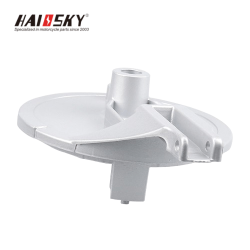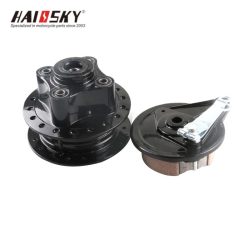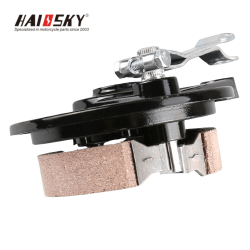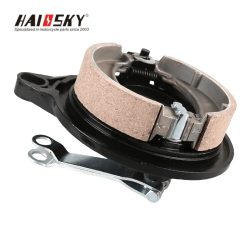OEM Motorcycle Parts
Category: Motorcycle Drum Brake Kits - Arms & Cams
The Ultimate Guide to Motorcycle Brake Drums, Arms & Cams: Everything You Need to Know
When it comes to motorcycle safety, the braking system is one of the most critical components. Motorcycle brake drums, arms, and cams are essential for ensuring your bike can stop effectively and safely, whether you’re navigating city streets or cruising on the highway. For B2B wholesalers and motorcycle enthusiasts, understanding the purpose, types, and maintenance of these components is essential. In this guide, we’ll dive deep into everything you need to know about motorcycle brake drums, arms, and cams, while optimizing for the keyword “motorcycle brake drum & arm & cam” to help you make informed decisions for your business or customers.
What is a Cam Drum Brake?
A cam drum brake is a type of drum brake system that uses a cam mechanism to actuate the brake shoes. When the rider applies the brake lever or pedal, the cam rotates, pushing the brake shoes outward against the inner surface of the brake drum. This creates friction, slowing down or stopping the motorcycle. Cam drum brakes are commonly used in older motorcycles and some modern bikes, particularly in rear-wheel applications.
Which Brake System is Best for Motorcycles?
The best brake system for a motorcycle depends on the rider’s needs and the type of motorcycle:
Disc Brakes: Offer superior stopping power, better heat dissipation, and consistent performance in all conditions. They are the standard for modern motorcycles.
Drum Brakes: Simple, durable, and cost-effective, drum brakes are suitable for entry-level and vintage motorcycles. They perform well in wet or muddy conditions but offer less stopping power compared to disc brakes.
For most modern motorcycles, disc brakes are the preferred choice due to their superior performance. However, drum brakes remain a reliable option for certain applications.
Why Are Drum Brakes Not Used Anymore?
Drum brakes are less common in modern motorcycles due to their limitations compared to disc brakes:
Lower Stopping Power: Drum brakes provide less stopping power, making them less suitable for high-performance motorcycles.
Heat Dissipation: Drum brakes are prone to overheating under heavy use, leading to brake fade.
Maintenance: Drum brakes are harder to service and maintain compared to disc brakes.
Despite these limitations, drum brakes are still used in some entry-level and vintage motorcycles due to their simplicity and cost-effectiveness.
How Much Does It Cost to Replace a Brake Drum?
The cost of replacing a motorcycle brake drum depends on factors like the type of drum, labor costs, and the motorcycle’s make and model. On average:
Standard Brake Drum:
50
t
o
50to150
Labor Costs:
50
t
o
50to100 per hour (if done by a professional)
For B2B wholesalers, purchasing in bulk can significantly reduce costs.
What Do Cammed Over Brakes Look Like?
Cammed over brakes occur when the brake cam is over-rotated, causing the brake shoes to lock against the drum. This can result in:
Locked Wheels: The wheels may not rotate freely, causing the motorcycle to drag or skid.
Reduced Braking Performance: The brakes may feel unresponsive or require excessive force to engage.
Visible Misalignment: The brake shoes may appear unevenly positioned against the drum.
If you notice these signs, it’s essential to inspect and adjust the brake cam to restore proper braking performance.
What is a Drum Cam?
A drum cam is a component of the drum brake system that converts the mechanical force from the brake lever or pedal into motion. When the rider applies the brakes, the cam rotates, pushing the brake shoes outward against the drum. This creates friction, slowing down or stopping the motorcycle. The drum cam is a critical part of the braking system, ensuring precise and consistent braking performance.
Types of Motorcycle Brake Drums
Motorcycle brake drums come in different types, each designed to meet specific performance and durability needs. Here’s a breakdown of the most common types:
1. Standard Brake Drums
Standard brake drums are made from cast iron or aluminum alloy. They are lightweight and efficient but tend to wear out quickly and have limited heat dissipation capabilities.
2. Ventilated Brake Drums
Ventilated brake drums feature small holes or vents that allow air to flow through the drum. This improves cooling performance and reduces the risk of brake fade, making them ideal for larger and heavier motorcycles.
3. Racing Brake Drums
Racing brake drums are made from advanced materials like carbon-carbon or carbon-ceramic composites. They offer excellent heat resistance, low weight, and high friction coefficients, making them ideal for high-performance and racing motorcycles.
4. Custom Brake Drums
Custom brake drums are designed to meet specific requirements, such as specialized materials, unique designs, and tailored braking performance. They are commonly used in niche markets like electric motorcycles and off-road bikes.
Maintenance Tips for Motorcycle Brake Drums, Arms & Cams
To ensure your brake drums, arms, and cams last as long as possible, follow these maintenance tips:
Regular Inspection: Check the brake drums, arms, and cams for signs of wear, cracks, or damage.
Cleanliness: Keep the brake components clean and free from dirt, oil, and debris.
Proper Adjustment: Ensure the brake cam and shoes are properly adjusted to prevent uneven wear.
Replace Worn Parts: Replace brake shoes, drums, or cams at the first sign of damage or wear.
Lubricate Moving Parts: Apply high-temperature grease to the cam and pivot points to ensure smooth operation.
How to Choose the Right Motorcycle Brake Drums, Arms & Cams
When selecting brake drums, arms, and cams for your inventory or customers, consider the following factors:
Compatibility: Ensure the components match the motorcycle’s make, model, and braking system.
Material: Choose high-quality materials like cast iron or stainless steel for durability and performance.
Performance Needs: Select components that meet the rider’s performance requirements, whether for commuting, touring, or racing.
Ease of Installation: Choose components that are easy to install and come with all necessary hardware.
Warranty and Support: Look for components backed by a warranty and manufacturer support for added peace of mind.
How to DIY and Replace Motorcycle Brake Drums, Arms & Cams
Replacing brake drums, arms, and cams is a straightforward process. Here’s a step-by-step guide:
Tools Needed:
Socket wrench
Torque wrench
Brake cleaner
High-temperature grease
Steps:
Prepare the Motorcycle: Secure the bike on a stable surface using a paddock stand or center stand.
Remove the Wheel: Loosen the axle nut and remove the wheel to access the brake components.
Remove Old Components: Disconnect the brake arm and cam, and remove the old brake drum.
Install New Components: Attach the new brake drum, arm, and cam, ensuring proper alignment.
Reassemble the Wheel: Reattach the wheel and tighten the axle nut.
Test the Brakes: Pump the brake lever a few times to ensure proper alignment and functionality.
FAQs About Motorcycle Brake Drums, Arms & Cams
Q: How often should I replace my brake drums?
A: Brake drums should be replaced every 30,000 to 70,000 kilometers, depending on riding conditions and maintenance.
Q: Can I upgrade to high-performance brake drums?
A: Yes, but ensure the new drums are compatible with your motorcycle’s braking system and other components.
Q: What’s the difference between standard and ventilated brake drums?
A: Standard drums are lightweight and efficient, while ventilated drums offer better cooling and reduced brake fade.
Final Thoughts
Motorcycle brake drums, arms, and cams are essential for ensuring your bike stops safely and effectively. By understanding their purpose, types, and maintenance requirements, you can keep your customers’ motorcycles performing at their best. At Haissky.com, we offer a wide range of high-quality brake components to meet the needs of B2B wholesalers and riders alike. Explore our catalog today and keep the roads safer!


